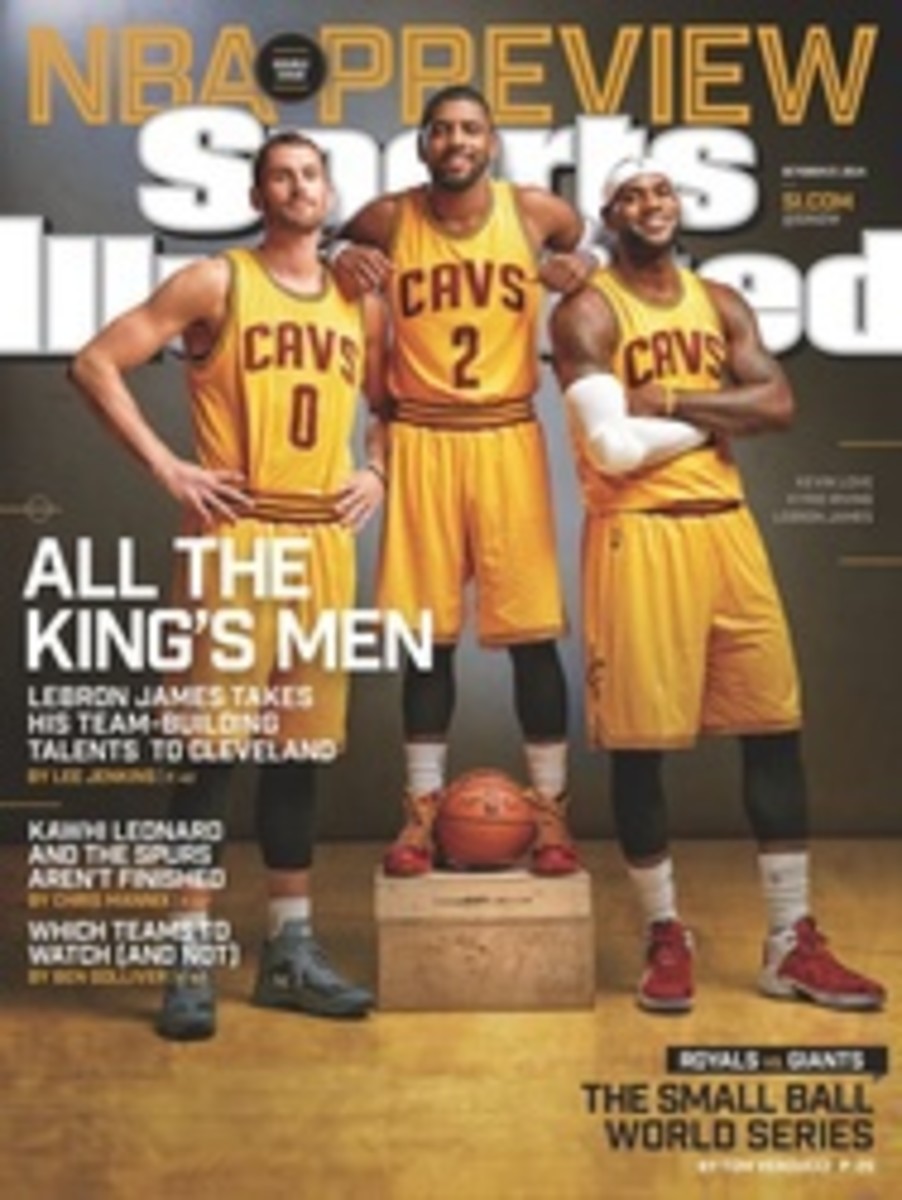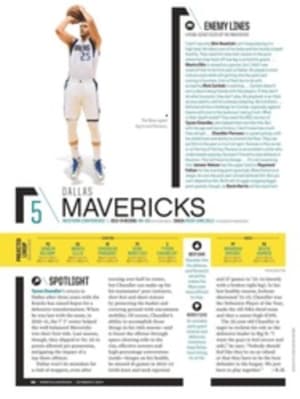
QUICK STUDIES
The Royals' road to the World Series began with a franchise-changing 2010 trade that delivered Alcides Escobar and established their development philosophy: speed rules
ALCIDES ESCOBAR was 16 years old, lithe and quick, when the Brewers gave him $33,000 on July 9, 2003, to leave his native Venezuela to play baseball in the United States. Eleven months later the organization added another athlete, one just as fast as Escobar but much rawer, as he had competed in his first baseball game just two years earlier. He was a 6'2", 18-year-old former basketball player from Florida named Lorenzo Cain. Milwaukee selected him in the 17th round of the '04 draft out of Madison County High and signed him the next year to a bonus of $100,000.
For most of the rest of the decade, the pair rambled through the Brewers' minor league system. Sometimes they were teammates, in outposts like Brevard County, Fla., and Huntsville, Ala. More often Escobar, though eight months younger, was a step ahead, as Cain stayed back to polish skills he had only recently learned. By 2010 both had reached Milwaukee, and both envisioned long careers there, Escobar as the Brewers' shortstop and Cain as their centerfielder. Then one day their phones buzzed.
Escobar remembers the date: "December 19, 2010," he recites. He was playing winter ball in Venezuela when his agent called to say he was on the cusp of becoming a member of the Royals. "What?" he asked, in disbelief. "Kansas City? Why?"
"Milwaukee wants to get Zack Greinke, one of the best pitchers in the major leagues," his agent told him. "And they need to give back a top prospect."
"I was surprised—like, 'Oh, my God,'" recalled Escobar last week. "I called my mother. I said, 'Mami, they might trade me to another city.' She said, 'Whatever God wants for you, so that you can keep playing.'"
Cain was trying to sleep through his phone's incessant vibrations, and eventually his mother texted him with the news that he, too, was Kansas City--bound. "It was all over ESPN and whatnot," he says. "Weird wake-up call."
Four years later Escobar and Cain are centerpieces of the Royals' lineup, batting, respectively, leadoff and third. More than that, though, they have come to define the style that allowed Kansas City to break its 28-year run of postseason misses and surge into the World Series on a playoff-record eight-game winning streak.
"That's what speed do," their teammate Jarrod Dyson likes to say about the source of the Royals' success. Much of the club's speed, both on the base paths and in the field, is supplied by Escobar and Cain. During the regular season the pair combined for nearly 40% of Kansas City's league-leading 153 steals; Escobar had 31, Cain 28. They also athletically patrol the two most important positions of a defense that has a way of turning even the hardest-hit balls into outs.
Conventional wisdom holds that the most important trade GM Dayton Moore made in assembling his unlikely AL champions came on Dec. 9, 2012, when he controversially sent a package built around outfielder Wil Myers, then one of the game's elite prospects, to Tampa Bay in exchange for staff No. 1 James Shields and a failed starter named Wade Davis. But the 47-year-old Moore isn't so sure that the foundational transaction for his team's current success wasn't the one he made two Decembers earlier—and not only because that deal also yielded pitcher Jake Odorizzi, whom he eventually flipped to the Rays along with Myers. "That trade," Moore says, "set the pathway for everything we did going forward."
SOMETIMES BASEBALL trades are contentious, requiring weeks of acrimonious negotiations. The Greinke deal was not that kind of deal.
Greinke was 27 years old; he was a true ace, the 2009 AL Cy Young winner; he was relatively affordable, due to be paid $13.5 million in each of the next two years; and he was languishing on a rebuilding club that had never finished better than 12 games below .500 in any of his seven big league seasons. "Zack was pretty outgoing about wanting to win, and we understood that," Moore says. "We weren't quite ready to win."
The Brewers, meanwhile, were ready. The young players Milwaukee G.M. Doug Melvin offered to Moore were attractive because of the positions they played. "We didn't have a shortstop prospect in our system," Moore says, "and we knew to be successful, you had to have an impact centerfielder." Moore also liked Escobar and Cain because they possessed one attribute that he felt sure would be essential to the long-awaited turnaround of his franchise: pure speed.
During the Royals' glory years—between 1976 and '85, they won six AL West titles, went to two World Series and won a lone championship—speed had defined them. While they never finished higher than sixth in the AL in home runs, they stole more bases than any club but the A's and hit more triples than anyone else, led by players like George Brett, U.L. Washington, Frank White and Willie Wilson. Their speed translated into stellar, athletic defense too.
Those teams were both built for and a product of Royals Stadium—renamed Kauffman Stadium in 1993—which had one of the league's most capacious playing surfaces and now has the AL's largest outfield by square footage. Moore was certain that to win, the modern Royals had to again take advantage of that reality rather than fight against it. "When Dayton put his plan together years and years ago, he knew we played in an extremely big ballpark, and that speed and athleticism would play a huge part in it," manager Ned Yost said during the ALCS. "And then he set out to find the most athletic players he could."
There were other considerations. One was that Moore had detected a leaguewide decline in power hitting, and he anticipated that teams would have to increasingly find a way to win that was not predicated on the home run. In 2000, major league hitters slugged a record 5,693 homers. By '10, the season before he traded away Greinke, that number had decreased to 4,613. This season the figure fell to 4,186, the lowest since 1995.
Another factor was economic. As baseball's power outage set in, players who could still produce it commanded increasingly exorbitant salaries that the small-market Royals could never afford. One proven free-agent slugger would eat up more than a quarter of Kansas City's annual payroll, which this season ranked 19th in the majors at about $92 million.
Further, Moore decided, a concerted effort to draft and develop homegrown sluggers would not make sense for the Royals. "Raw power is identifiable, but often it doesn't play right away," Moore says. "If you can't center the ball on the bat—especially in this ballpark—even if you have raw power, it's going to the warning track. You gotta become a real good hitter if you're going to center the ball on the bat. That takes time, repetition. We don't have a lot of time. If a player becomes really, really good, it can take up to four years of playing every day. You can do the math. He's going to be a free agent in two years."
Players with speed, though, can make a difference immediately. "Defense is one area of the game that through hard work and concentration can improve rather quickly," Moore says. "If a player has speed, it's probably usable both defensively and on the bases. I didn't know if we were going to be able to make it work, but that's what we wanted to do."
Moore has surrounded Escobar and Cain with other speedy players such as Dyson, Nori Aoki and, most recently, Terrance Gore. There are still more of them down on the farm: Lane Adams, a 24-year-old outfielder who has swiped 38 bases in each of the last two years; 19-year-old shortstop Raul A. Mondesi, the son of the big league veteran; and Bubba Starling, the 22-year-old former Nebraska quarterback recruit who has struggled with the bat but has stolen 49 bases in 55 attempts during his 2½ minor league seasons. (The Royals' farm system also produced nearly half of their World Series roster, including longtime building blocks Billy Butler and Alex Gordon; Mike Moustakas and Eric Hosmer, both of whom have broken out this postseason; starter Yordano Ventura; and dominating relievers Greg Holland and Kelvin Herrera, who along with Davis have essentially given opponents six innings each night during which to score.)
Four years after the Greinke trade, one thing seems clear: The Royals have been able to make it work.
EVEN AS Escobar and Cain—who will likely remain under club control at bargain rates for three seasons after this one—have emerged as spark plugs on a World Series team, Milwaukee has little reason to regret trading them away. Zack Greinke did exactly what the Brewers hoped he might. He led them to within two games of the World Series in 2011, and a year later they were able to flip him to the Angels for another young and speedy shortstop, Jean Segura, who was an All-Star in '13.
Greinke, who signed with the Dodgers two winters ago, took some time during Los Angeles's divisional series against the Cardinals to talk about his first club. "They got the best defense in the history of baseball, maybe," he said. "It's been fun watching them play."
"Kansas City," Greinke concluded, "I'm pretty happy for them."
He might be marginally less happy now, as the Cardinals beat his Dodgers in four games and left him short of the World Series round for the 11th consecutive year. Still, he can derive some solace from two facts. The first is that in 2014 he earned some $28 million, more than any other big leaguer, and he will be paid an additional $94 million over the next four seasons. The second is that in a roundabout way, the Royals would likely never have made it this far without him.
Moore knew speed was key for a low-budget team in a big park. "He set out to find the most athletic players he could," says Yost.
46
Runs saved above average by the Royals' outfielders this season, most in the majors.
95
Home runs hit this season by the Royals, the first playoff team with under 100 since 1988.
81%
Stolen base success rate this season for K.C., third best ever by a team with at least 153 steals.
PHOTO
DILIP VISHWANAT/GETTY IMAGES
PHOTO
DAVID E. KLUTHO/SPORTS ILLUSTRATED
WHERE HITS GO TO DIE Moore and Yost (far right, top) built an outfield crew around Dyson (far right, bottom) and Cain (right), who can run down almost anything.
PHOTO
CHARLIE RIEDEL/AP
[See caption above]
PHOTO
DAVID E. KLUTHO/SPORTS ILLUSTRATED
[See caption above]
ILLUSTRATION

